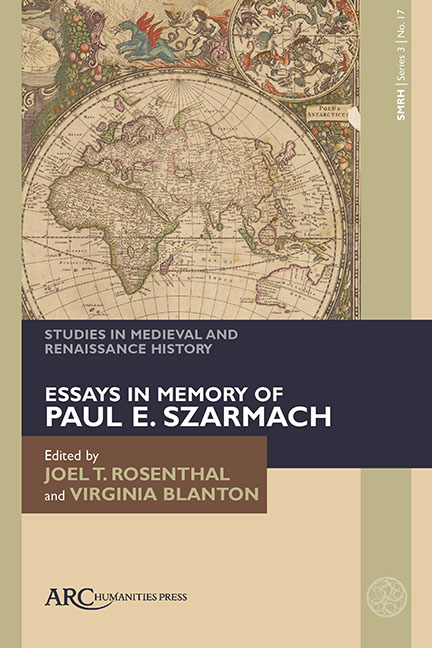Book contents
- Frontmatter
- Contents
- List of Illustrations
- Introduction
- Memories of Viking Age Cultural Contact: England in the Íslendingasögur
- Expressions of Cultural Disability: Navigating (Non)Normativity in the Hebrew–Italian Melekh Artus (King Artus)
- “All the rancour and enmity between us”. The War Between Richard, Earl Marshal, and King Henry III: Its Origins and Resolution
- Royal Consumption and Gifts of Deer in Thirteenth-Century England
- Travers and Trappe in the Palace of Pandarus: A Note
- Benedictine Devotion to England’s Saints: Thomas de la Mare, John of Tynemouth, and the Sanctilogium in Cotton Tiberius E. i
- The Rise of Admission by Apprenticeship Among the Freemen of Norwich, 1365–1415
- Nuns on the Run, or the “Sturdy and Wilful Dames” of Syon Abbey and their Disobedience to the Tudor State ca. 1530–1600
- Taking the Tour: Heritage Management in A Connecticut Yankee in King Arthur’s Court
Taking the Tour: Heritage Management in A Connecticut Yankee in King Arthur’s Court
Published online by Cambridge University Press: 13 February 2024
- Frontmatter
- Contents
- List of Illustrations
- Introduction
- Memories of Viking Age Cultural Contact: England in the Íslendingasögur
- Expressions of Cultural Disability: Navigating (Non)Normativity in the Hebrew–Italian Melekh Artus (King Artus)
- “All the rancour and enmity between us”. The War Between Richard, Earl Marshal, and King Henry III: Its Origins and Resolution
- Royal Consumption and Gifts of Deer in Thirteenth-Century England
- Travers and Trappe in the Palace of Pandarus: A Note
- Benedictine Devotion to England’s Saints: Thomas de la Mare, John of Tynemouth, and the Sanctilogium in Cotton Tiberius E. i
- The Rise of Admission by Apprenticeship Among the Freemen of Norwich, 1365–1415
- Nuns on the Run, or the “Sturdy and Wilful Dames” of Syon Abbey and their Disobedience to the Tudor State ca. 1530–1600
- Taking the Tour: Heritage Management in A Connecticut Yankee in King Arthur’s Court
Summary
MARK TWAIN BEGINS A Connecticut Yankee in King Arthur's Court with a preface justifying anachronism, that the “laws and customs” are “historical,” as are the episodes “used to illustrate them.” He explains, “One is quite justified in inferring that whatever one of these laws or customs was lacking in that remote time, its place was competently filled by a worse one.” The genesis of the ideas informing my argument share Twain's spirit of reconciling histories that may at first seem anomalous. In 1988, I attended an NEH Institute, “Arthur of Avalon,” directed by Paul Szarmach at the State University of New York at Binghamton. It was, as its name suggests, medievalist rather than medieval and included two field trips: one to Mark Twain's summer house, part of Quarry Farm, in Elmira, New York; and the other to the Morgan Library in New York City, where William Voelkle shared numerous medieval manuscripts as well as his expertise. This past summer, I visited Mark Twain's house in Hartford and William Gillette's “folly” in nearby East Haddam, Connecticut, and had a sense that the latter had recreated Camelot as modernized by Twain's Hartford born and bred character, Hank Morgan. The actor and the writer knew each other.
Were my assumptions historical? Does it matter? Or, rather, did it matter to Twain? What matters to an argument about tourism and heritage management in Twain's novel, where he, as I am doing here, reflect on why we visit old castles, renovated castles, follies, ruins, and museums associated with someone else's history? Twain was writing about his own time, informed by his experiences, as I am writing about mine, partly informed by Paul's decision to make visiting Mark Twain's studio part of a program for understanding Arthur of Avalon. Requiescas in pace, Paulus.
Introduction
Warwick Castle and the Warwick Arms, the latter where the tourists M. T. and the stranger—Hank—lodge, begin the novel A Connecticut Yankee in King Arthur's Court, as part of the “Word of Explanation” that frames a more extended tour of medieval England described in the manuscript M. T. receives from his fellow traveler.
- Type
- Chapter
- Information
- Studies in Medieval and Renaissance History series 3 volume 17Essays in Memory of Paul E. Szarmach, pp. 169 - 185Publisher: Amsterdam University PressPrint publication year: 2023



